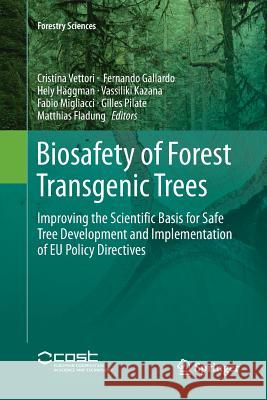Biosafety of Forest Transgenic Trees: Improving the Scientific Basis for Safe Tree Development and Implementation of Eu Policy Directives » książka
topmenu
Biosafety of Forest Transgenic Trees: Improving the Scientific Basis for Safe Tree Development and Implementation of Eu Policy Directives
ISBN-13: 9789402413717 / Angielski / Miękka / 2018 / 337 str.
Biosafety of Forest Transgenic Trees: Improving the Scientific Basis for Safe Tree Development and Implementation of Eu Policy Directives
ISBN-13: 9789402413717 / Angielski / Miękka / 2018 / 337 str.
cena 603,81
(netto: 575,06 VAT: 5%)
Najniższa cena z 30 dni: 578,30
(netto: 575,06 VAT: 5%)
Najniższa cena z 30 dni: 578,30
Termin realizacji zamówienia:
ok. 22 dni roboczych
Dostawa w 2026 r.
ok. 22 dni roboczych
Dostawa w 2026 r.
Darmowa dostawa!
Kategorie:
Kategorie BISAC:
Wydawca:
Springer
Seria wydawnicza:
Język:
Angielski
ISBN-13:
9789402413717
Rok wydania:
2018
Wydanie:
Softcover Repri
Ilość stron:
337
Waga:
0.50 kg
Wymiary:
23.39 x 15.6 x 1.88
Oprawa:
Miękka
Wolumenów:
01
Dodatkowe informacje:
Wydanie ilustrowane











